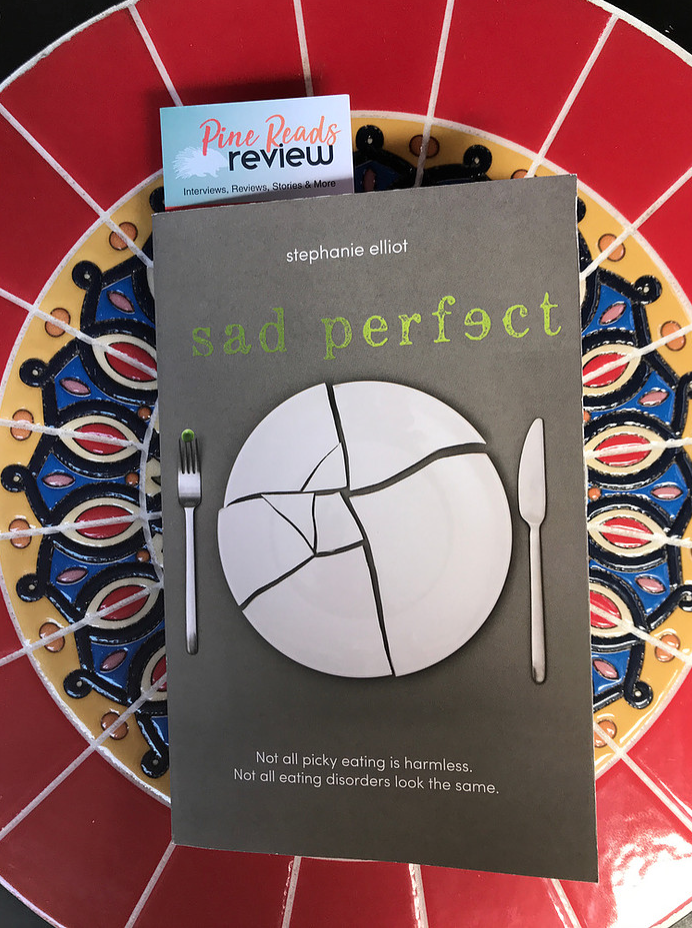
Have you heard of ARFID?
I know I hadn’t.
But then I read Sad Perfect by Stephanie Elliot.
ARFID stands for Avoidant/Restrictive Food Intake Disorder, an eating disorder different than most. Unlike disorders such as bulimia or anorexia, ARFID doesn’t stem from a place of self image. It’s not your body image that hurts you, it’s food itself.
There is no joy when it comes to eating. No cravings, no desires, and no comfort. It is just an overwhelming anxiety that consumes you.
For a while, ARFID has been lumped alongside picky eating and never truly understood. Many still believe that those diagnosed with ARFID will grow out of their “picky” eating habits, not quite yet grasping that fact that it is a disorder
According to the Eating Recovery Center, a study done in 2016 revealed that nearly 5% of children struggle with ARFID.
Although 5% may not seem like a lot, it is still a significant percent of kids who are struggling with a disorder that lacks general understanding. In fact, according to a study done by the Canadian Pediatric Surveillance Program, 63% of pediatricians weren’t familiar with ARFID or how to diagnose it.
People with ARFID avoid eating due to stresses caused by the physical aspects of food. Details such as texture, color, and smell dissipate ones desire to eat. People with ARFID may fear eating due to anxieties over choking, digesting and an overall disturbance of food. It’s also believed that ARFID comes from trauma experienced in utero.
Someone with ARFID will often times have what is known as “safe foods.” Safe foods are exactly what they sound like. They are foods that one feels comfortable eating; foods that don’t trigger any sort of anxiety or fear. They are, for lack of a better word, safe.
Feelings of safety and comfort are rarities in the life of someone living with ARFID, because ARFID throws one into a world of anxiety. A world where eating in a group setting is a nightmare. A place that can be completely isolating.
I think many people can agree that adolescence, is tough. Being young makes navigating your own struggles feel impossible. I know personally, it always felt impossible to be honest with the people around me. Sharing my feelings and my journey regarding mental health was something I was never able to do.
And so begins the isolation. It hurts to talk about the things that run loops in your mind. Just like Stephanie Elliot describes, it is a monster. A monster that gnaws at you all day long, bullying you until it gets what it wants.
My personal monster always made me feel as though my depression couldn’t be talked about, that it couldn’t be understood. In Sad Perfect, the main character, Pea, experiences this first hand. Her disorder was not medically understood, but she knew that it was real. Extremely real.
But when her first love interest completely invalidates her, she is sent into a spiral of isolation.
I believe that, in the moments when it feels impossible to find validity in ourselves, it seems like speaking out is pointless. I’m grateful that Sad Perfect challenges that. I don’t think we are commonly met with the reality that speaking about our problems gives us more than we realize, but Elliot changes that misconception.
I’ve always been the type of person to clam up and stay that way; but I’ve learned that it doesn’t ever help. I’ve always known that what really mattered to me is peoples attempt at understanding. I wanted the people around me to try a little bit, and I think Pea wanted the same thing. She lived her entire life feeling as though something was wrong with her; stuck in a silence encouraged by herself.
The simple experience to to have someone just believe her, listen to her and stay by her side, well, that changed everything.
PRR Writer, Eva Halvax